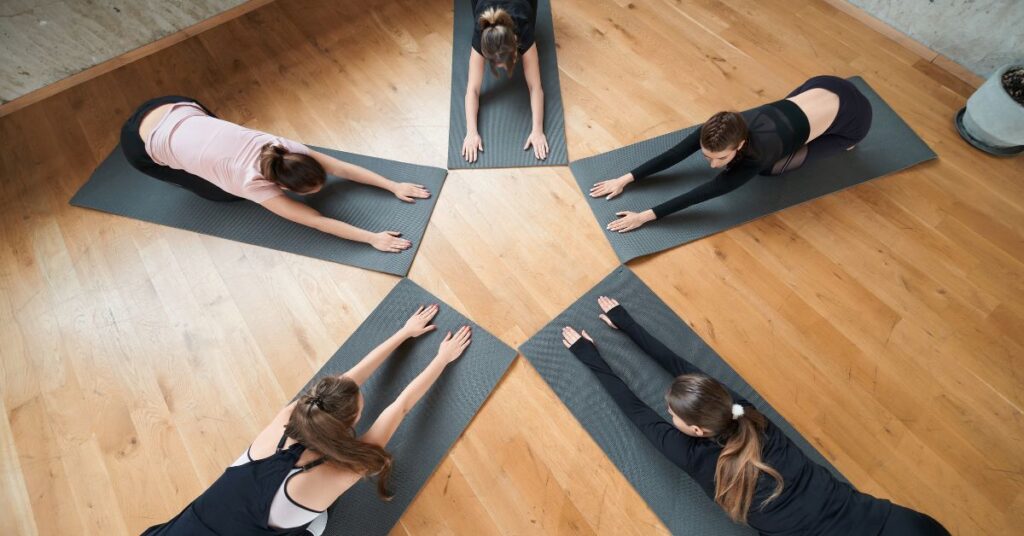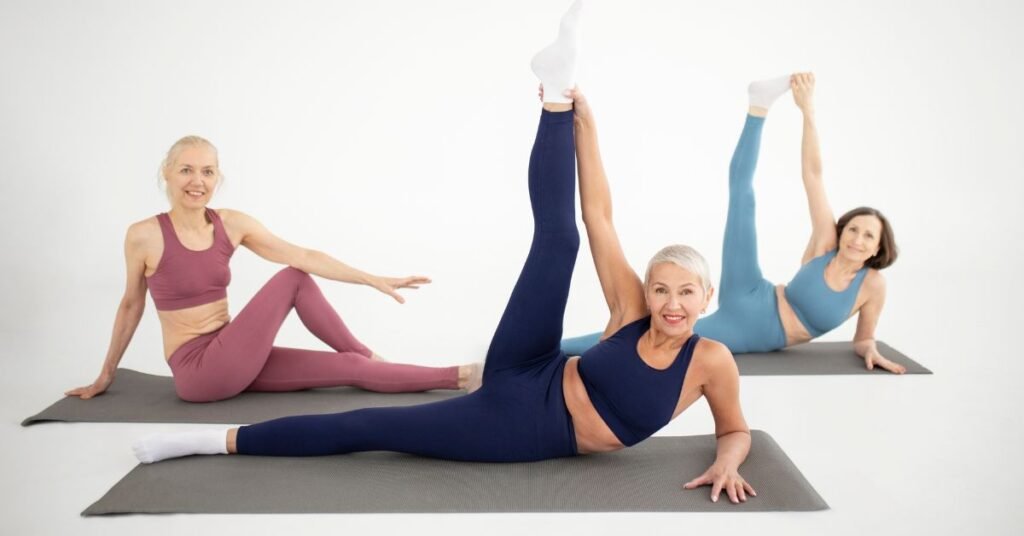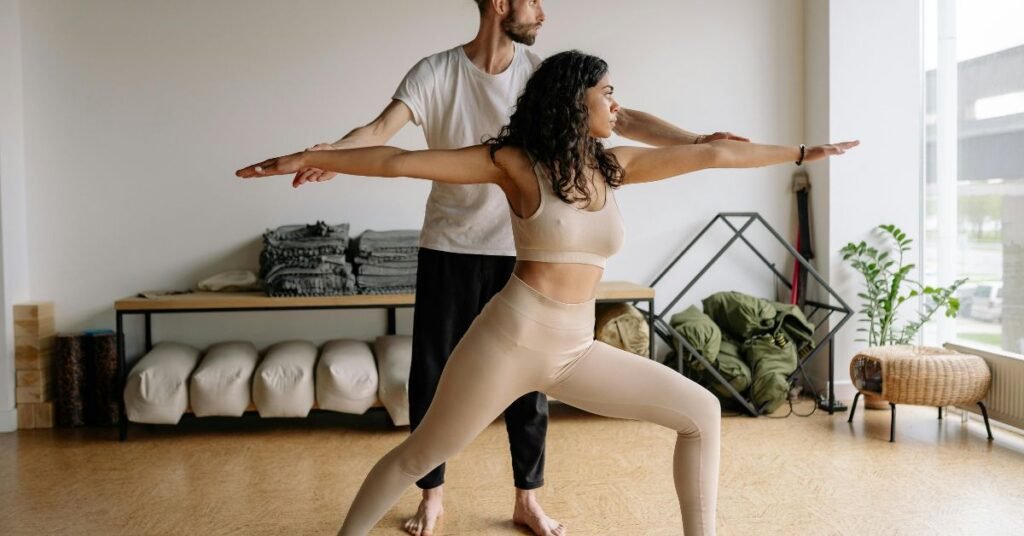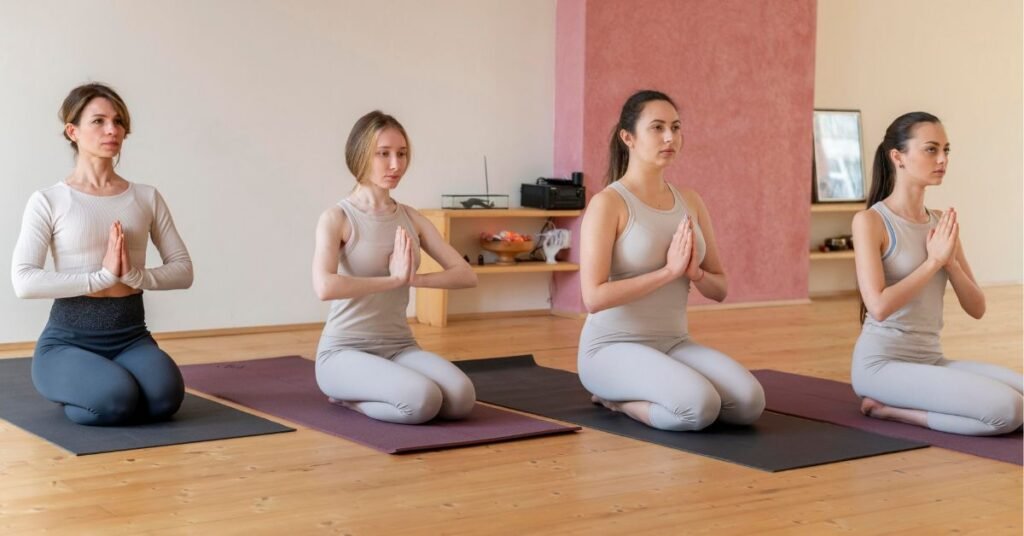Yoga is typically seen as an individual practice, but imagine taking it to a whole new level by practicing with four other people. 5 person group yoga poses are not only fun but also foster teamwork, trust, and balance. Whether you’re trying it for the first time or looking for a creative way to challenge yourself and your friends, five-person yoga poses offer a unique and exciting way to deepen your yoga practice. In this blog post, we’ll explore five-person yoga poses, why they’re beneficial, and how to practice them safely.
Let’s dive in and discover how to create harmony and balance in a group setting with some amazing 5 person yoga poses that will test your coordination and teamwork.
Why Try 5 Person Yoga Poses?
Yoga is often associated with self-awareness and personal growth, but practicing it with others introduces new dimensions of physical connection, trust, and community. Group yoga challenges you in different ways. Here are a few benefits of trying five-person yoga poses:
- Improves Trust and Communication: In five-person yoga poses, communication becomes essential. You need to rely on each other for balance, timing, and coordination. This fosters a sense of trust and enhances communication between participants.
- Enhances Balance and Coordination: Group yoga pushes your body to stabilize itself while connecting with others. Achieving balance and flow as a team builds coordination skills, both physically and mentally.
- Strengthens Muscles and Core: Holding challenging positions with others requires greater core strength and stability. These poses strengthen your muscles as you work together to maintain postures.
- Promotes Fun and Connection: Practicing yoga with friends or fellow yogis is a joyful experience. Laughter, fun, and bonding make group yoga a great activity for building friendships and fostering community.
Now, let’s look at some 5 person group yoga poses that you can try for an unforgettable yoga experience.
1. Circle of Trust (Seated Forward Bend)
One of the simplest yet effective poses for groups, the Circle of Trust brings all participants together while promoting flexibility and connection.
How to Do It:
- Sit in a circle, legs extended and feet touching those of the people next to you.
- Hold hands with your neighbors and lengthen your spine as you inhale.
- On the exhale, gently lean back, pulling your partners forward into a seated forward bend.
- Stay connected through your hands and focus on lengthening your spine and deepening the stretch.
Benefits:
- Stretches the hamstrings and lower back.
- Enhances trust and teamwork as you lean on each other.
- Encourages synchronized breathing and movement.
Pro Tip: Be gentle with your partners and avoid pulling too hard to prevent discomfort. Slow, steady movements are key.
Readmore: The Ultimate Guide to 3-Person Yoga Poses
Readmore: Yoga Poses for 4 Persons
2. Star Pose (Standing Balance)
The Star Pose is a fun challenge that emphasizes balance, teamwork, and leg strength. It is one of the most dynamic five-person yoga poses and looks as beautiful as it feels.
How to Do It:
- Stand in a circle, arms outstretched, hands connected with your partners.
- Lift your right leg out to the side while balancing on your left foot.
- Hold this position for several breaths while relying on each other for stability.
- Switch sides and repeat with the left leg.
Benefits:
- Improves balance and coordination.
- Strengthens the legs and core.
- Encourages unity and teamwork.
Pro Tip: Stay focused on your breathing to help maintain balance. Support each other by gently adjusting your stance if needed.
3. Group Tree Pose
The Tree Pose is a classic yoga pose, but when practiced with five people, it takes on a new level of difficulty and fun. This pose requires concentration and balance from every group member.
How to Do It:
- Stand in a tight circle, shoulders lightly touching for support.
- Each person moves into Tree Pose by lifting one foot and placing it on the inner thigh or calf of the opposite leg.
- Hands can be placed on your heart or used to connect with those next to you for added balance.
- Hold the pose for a few breaths and then switch legs.
Benefits:
- Enhances individual balance while relying on group support.
- Strengthens leg muscles and core stability.
- Promotes mindfulness and focus within the group.
Pro Tip: Use each other’s shoulders for slight support if you feel off balance, but try to stand strong and steady as a team.
Readmore: Tips for Building a Supportive Yoga Community
Readmore: 5 Inspiring Yoga Routines for Nature Lovers
4. Back-to-Back Chair Pose
Chair Pose is great for strengthening your legs and lower body, but when you add a partner (or four), it becomes a group challenge that tests trust and communication.
How to Do It:
- Partner up and stand back-to-back, with each pair forming a larger circle.
- Press your backs against each other and slowly lower into Chair Pose by bending your knees at a 90-degree angle.
- Lean on your partner for support and hold for several breaths.
- Slowly rise back to standing and repeat.
Benefits:
- Strengthens the quadriceps and glutes.
- Promotes trust between partners.
- Encourages proper alignment and posture.
Pro Tip: Maintain even pressure on your partner’s back and move slowly to avoid falling or losing balance.
5. Five-Pointed Star (Extended Forward Fold)
The Five-Pointed Star is a visually striking pose that stretches the whole body and strengthens the connection between group members.
How to Do It:
- Stand in a star shape with feet touching in the center and arms reaching out like the rays of a star.
- Inhale, lengthen your spine and exhale as you fold forward from the hips, keeping your arms extended.
- Hold the pose for several breaths, deepening the stretch and staying connected through the arms or feet.
Benefits:
- Deep hamstring and lower back stretch.
- Enhances balance and coordination.
- Encourages unity and shared energy within the group.
Pro Tip: Focus on synchronizing your breathing as a group to deepen the stretch and maintain balance.
Tips for Practicing 5-Person Yoga Poses Safely
Practicing group yoga requires mindfulness and safety precautions, especially when trying challenge 5 person yoga poses. Here are some essential tips:
- Warm-Up: Before attempting these poses, ensure that everyone has properly warmed up their muscles. A group warm-up session can include Sun Salutations or dynamic stretches to prepare your body.
- Start Slow: If you’re new to group yoga, start with simple poses like the Circle of Trust or Group Tree Pose. As you become more comfortable, you can try more challenging poses that require greater coordination.
- Communication Is Key: Always communicate with your group members. Whether it’s adjusting a pose, slowing down, or asking for help, clear communication will prevent injuries and ensure everyone enjoys the practice.
- Focus on Alignment: Proper alignment is essential in group yoga to avoid strain or injury. Pay attention to your own body and provide feedback to others to maintain safe postures.
- Practice Patience: Five-person yoga poses can be challenging, especially if one or more members are beginners. Be patient with each other and encourage a spirit of fun and collaboration rather than perfection.
Conclusion
Practicing five-person yoga poses offers a unique way to deepen your yoga practice while building trust, communication, and friendship. Whether you’re working on balance with the Star Pose, or laughing together in the Circle of Trust, these poses create a powerful experience of connection and mindfulness. Try these fun, challenging 5 person yoga poses with your friends, family, or fellow yogis to experience the true essence of yoga—unity.
Readmore: Sleeping Swan Yoga Pose
Readmore: Balancing Table Pose (Dandayamna Bharmanasana)
FAQs
1. What are 5 person yoga poses?
Five-person yoga poses are yoga postures that involve five participants working together to achieve balance, coordination, and synchronization. These poses focus on connection and trust, enhancing the traditional solo practice of yoga by making it a group activity.
2. Can beginners try five-person yoga poses?
Yes! Beginners can try simpler five-person yoga poses like the Circle of Trust or Group Tree Pose. These poses don’t require advanced flexibility or strength but focus more on balance and teamwork. It’s important to start slow and practice with partners you feel comfortable with.
3. What are the benefits of 5 person group yoga poses?
Five-person yoga poses improve trust, communication, balance, coordination, and core strength. They also create a fun and interactive way to practice yoga while fostering a sense of community among the participants.
4. Do we need any special equipment for 5-person yoga poses?
No special equipment is needed for five-person yoga poses. However, practicing on yoga mats is recommended to ensure comfort and prevent slipping. Some poses may require props like blocks for beginners, but most can be done with just the participants and a comfortable space.
5. Are five-person yoga poses safe?
Yes, five-person yoga poses can be safe as long as all participants communicate effectively and maintain proper alignment. It’s important to move slowly, listen to your body, and support each other to avoid injuries. A warm-up before starting is also essential to prepare the muscles.
6. How do I prepare for 5 person yoga poses?
Start with a good warm-up session to get your muscles ready. Make sure everyone in the group is comfortable with the poses being attempted and that communication is clear throughout the practice. Focus on breathing and movement synchronization to ensure a smooth flow.
7. What should I do if my group loses balance during a pose?
If your group loses balance, don’t worry! Take a break, reset your positions, and try again with more focus on slow, controlled movements. It’s normal to experience challenges in balance, especially with group poses, so patience and practice are key.

Sonu is a passionate yoga teacher with over 6+ years of experience helping individuals find balance, strength, and inner peace through the transformative power of yoga. As the creator of Pure Yoga Vibes, Sonu shares expert insights, inspiring practices, and a wealth of knowledge to support your wellness journey. Dedicated to creating a space for growth and mindfulness, Sonu’s mission is to make yoga accessible and enjoyable for everyone. For inquiries or collaborations, feel free to reach out at contact@pureyogavibes.com.



